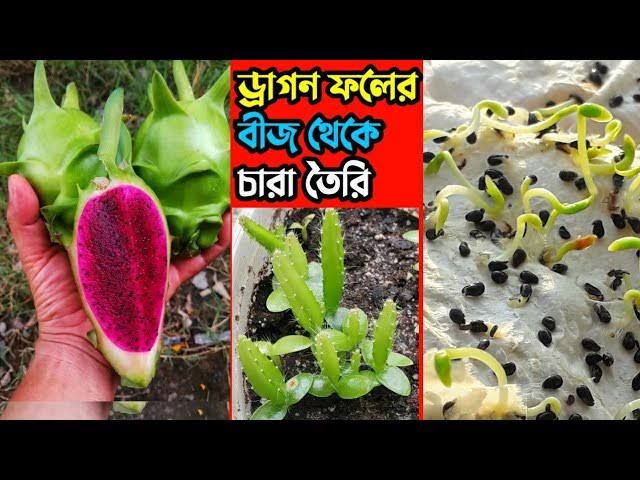
Bismillaher Rahmanir Rahim.
Assalamu Alaikum Wa Rahmatullahi Wa Barakatuhu
Dear Companions Today I want to share with you some words about the evils of killing foetuses.Welcom to this post and congratulations to all
Dragon Fruit Cultivation: A Comprehensive Guide
Dragon fruit (Hylocereus spp.), also known as pitaya, is a tropical fruit that has gained popularity for its vibrant color, unique appearance, and rich nutritional value. Native to Central and South America, it is now cultivated in various parts of the world, including Asia, where the conditions are ideal for its growth. This guide will discuss the cultivation method, nutritional value, and tips for growing dragon fruit profitably.
Understanding Dragon Fruit
Dragon fruit grows on a cactus species that thrives in warm, humid climates. Its stems are thick, fleshy, and climbing, often needing support structures like trellises. The plant bears stunningly beautiful white flowers, which bloom only at night. The fruit itself is oval or pear-shaped, with a leathery skin covered in scales, giving it a dragon-like appearance. Inside, the flesh is either white, red, or purple, dotted with tiny black seeds.Nutritional Value of Dragon Fruit
Dragon fruit is not only visually appealing but also packed with nutrients. It is low in calories and offers several health benefits:
Rich in antioxidants: Including betalains, polyphenols, and flavonoids, which help neutralize free radicals.
Vitamin C: A good source of this essential vitamin, which boosts immunity and skin health.
Dietary fiber: Promotes digestion and supports heart health.
Magnesium: Crucial for muscle function, bone health, and energy production.
Iron: Helps in the formation of red blood cells and improves oxygen transport in the body.
Low sugar: Despite its sweet taste, dragon fruit is low in sugar, making it suitable for diabetics in moderation.
This combination of nutrients helps reduce inflammation, improve heart health, and maintain healthy skin.
- Dragon Fruit Cultivation Method
a. Climate and Soil Requirements
Climate: Dragon fruit grows best in tropical or subtropical climates. It prefers temperatures between 20°C and 30°C and can tolerate short periods of drought. However, prolonged exposure to cold or frost can damage the plant.
Soil: The plant thrives in well-drained, sandy or loamy soils with a pH of 5.5 to 7.5. Good drainage is crucial, as waterlogging can lead to root rot.
b. Propagation
Dragon fruit can be propagated either by seed or cutting. However, cuttings are preferred as they produce fruit faster.
From Cuttings: Select healthy, mature stems for cuttings. Each cutting should be around 12 to 15 inches long. Allow the cuttings to dry for a few days in a shaded area before planting to prevent rotting.
From Seed: While growing from seed is possible, it is a slower process. Seeds are extracted from ripe fruit, cleaned, and sown in well-prepared soil. It can take several years for seed-grown plants to bear fruit.
c. Planting
Trellis System: Since dragon fruit is a climbing cactus, it requires support. A trellis or stake can be used to support the plant as it grows.
Spacing: Plants should be spaced about 2 to 3 meters apart in rows, with 3 to 4 meters between rows. This ensures enough sunlight and air circulation.
Planting Depth: For cuttings, plant about 5 to 7 cm deep, with the cut end facing down. Ensure that the soil is loose and well-drained.
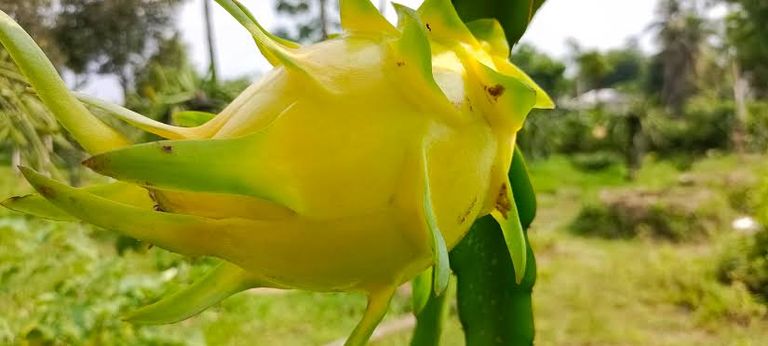
source
d. Watering
Dragon fruit requires consistent watering, especially during dry periods. However, overwatering can lead to root rot. It’s essential to water the plant deeply once a week during the growing season, and less frequently in the dormant season. Drip irrigation is recommended to maintain moisture levels without waterlogging.
e. Fertilization
Dragon fruit benefits from regular fertilization, especially during the growing season.
Organic fertilizers: Well-decomposed compost or manure can be applied at the base of the plant.
Chemical fertilizers: A balanced NPK fertilizer (10-10-10) can be applied every 4 to 6 weeks. Once the plant starts flowering, a phosphorus-rich fertilizer helps promote fruit development.
f. Pruning and Training
Pruning is essential for maintaining plant health and maximizing yield.
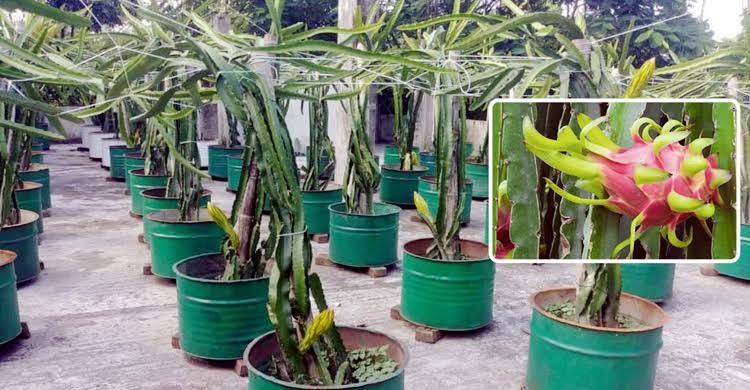
source
Prune regularly to remove dead or damaged branches and to maintain the desired shape.
Training the plant to grow upward on the trellis improves sunlight exposure and air circulation, which reduces the risk of disease.
g. Pest and Disease Management
Dragon fruit plants are generally hardy but can be affected by pests like mealybugs, aphids, and ants. Fungal diseases like stem rot and fruit rot can also occur in humid conditions.
Pest control: Regular inspection and the use of organic insecticides can help control pests.
Fungal control: Ensure proper spacing between plants to promote airflow and avoid waterlogging, which can lead to fungal infections.
h. Flowering and Pollination
Dragon fruit flowers only bloom at night and last for one night. In some regions, hand pollination is required to ensure fruit set, especially if pollinating insects like bees or bats are absent.
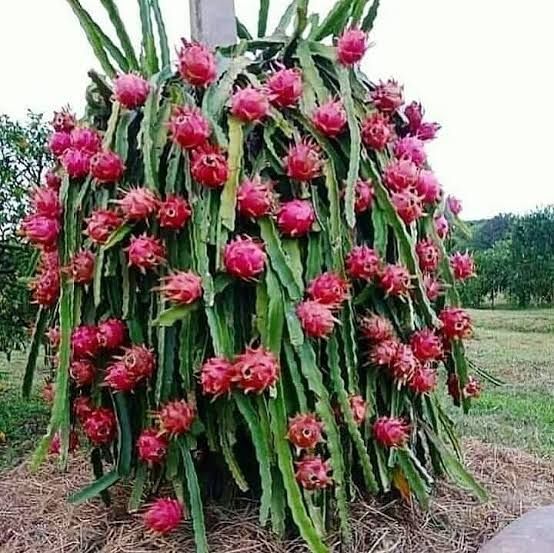
source
i. Harvesting
Dragon fruit is ready for harvest about 30 to 50 days after flowering. The fruit should be harvested when it reaches full color (red, yellow, or pink, depending on the variety). Harvesting too early can result in sour-tasting fruit, while waiting too long can lead to overripe, mushy fruit.
- Growing Dragon Fruit Profitably
a. Market Demand
The increasing awareness of dragon fruit’s health benefits has led to a surge in demand worldwide. The fruit is widely used in fresh consumption, smoothies, salads, and desserts. Its exotic appearance and health benefits have made it popular in high-end markets.
b. Cost and Profitability
Initial Investment: The primary investment includes land preparation, trellis construction, plant cuttings, irrigation, and fertilizers. These initial costs can be high, but dragon fruit plants can produce fruit for up to 20 years.
Yield: A well-maintained plant can yield 20 to 30 fruits per year, depending on the variety and growing conditions. With proper care, commercial dragon fruit farms can achieve yields of up to 15 to 20 tons per hectare annually.
Market Price: Dragon fruit fetches a premium price in both local and export markets due to its exotic nature. Farmers can charge higher prices in organic or specialty markets.
c. Value Addition
To increase profitability, farmers can explore value-added products like dragon fruit jams, jellies, juices, and dried fruits. Additionally, organic certification can open up new markets with higher returns.
d. Export Potential
The export market for dragon fruit is growing, with countries like the United States, Europe, and Japan showing increased interest. Meeting international quality standards and adhering to phytosanitary regulations are crucial for tapping into these lucrative markets.
source
Dragon fruit cultivation offers a profitable venture for farmers in tropical and subtropical regions. By following proper cultivation practices and focusing on pest management, irrigation, and pruning, farmers can maximize yields. The growing global demand for this nutrient-rich fruit, combined with its exotic appeal, makes dragon fruit a promising crop for sustainable agricultural ventures.
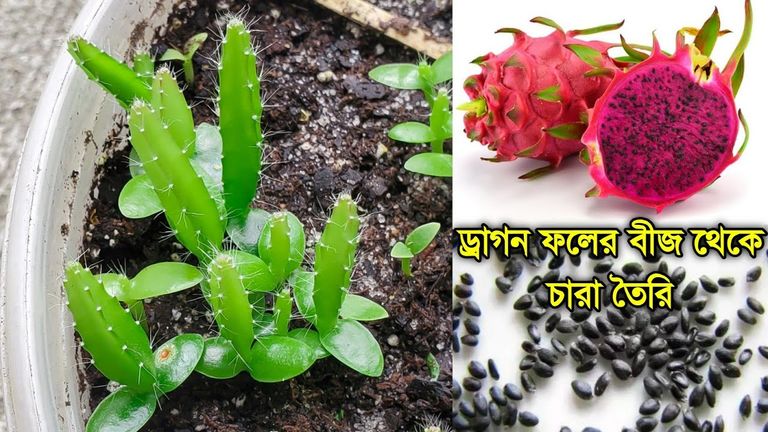

Upvoted. Thank You for sending some of your rewards to @null. Get more BLURT:
@ mariuszkarowski/how-to-get-automatic-upvote-from-my-accounts@ blurtbooster/blurt-booster-introduction-rules-and-guidelines-1699999662965@ nalexadre/blurt-nexus-creating-an-affiliate-account-1700008765859@ kryptodenno - win BLURT POWER delegationNote: This bot will not vote on AI-generated content